The Library of Consciousness
of Consciousness

We know it eternally. It is the background not only of thought—as Maharshi told us—but of every act of living.
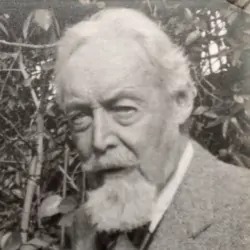
1964

Zen, rooted in the Chinese Chán tradition, is a school of Mahāyāna Buddhism renowned for its emphasis on meditation, mindfulness, and direct experience of reality. Originating in China during the Tang dynasty, Zen was influenced by Taoism and gradually spread to Japan, where it became known as Zen. At its core, Zen emphasizes the practice of zazen, or seated meditation, as a means to cultivate awareness and insight into the nature of existence. Unlike some other Buddhist traditions, Zen places less emphasis on doctrinal study and more on direct experience and realization through meditation and contemplation. Zen teachings often employ paradoxical statements (kōans) and stories (zen anecdotes) to provoke deep insight and break through conceptual limitations, encouraging practitioners to transcend dualistic thinking and awaken to their true nature.
Zen philosophy is characterized by its emphasis on non-attachment, emptiness, and the “suchness” of reality. Zen practitioners seek to cultivate a state of profound mindfulness and presence in everyday life, viewing each moment as an opportunity for awakening. The concept of mu, or “emptiness,” lies at the heart of Zen, pointing to the interconnectedness and impermanence of all phenomena. By letting go of attachments and preconceptions, Zen practitioners aim to experience reality directly, free from the distortions of ego and conceptual thought. Through rigorous meditation practice and guidance from a teacher (rōshi), Zen is said to offer a path towards profound insight, liberation from suffering, and a deep sense of inner peace.

All Else Is Bondage
Non-Volitional Living
These thirty-four powerful essays, based on Taoist and Buddhist thought, constitute a guide to what the author calls “non-volitional living”—the ancient understanding that our efforts to grasp our true nature are futile. Wei Wu Wei explains these venerable spiritual traditions in the context of modern experience, using wit and considerable precision to convey their profound insight into the very nature of existence.

At the Interface
Technology and Mysticism
What happens when a mystic and a futurist debate humanity’s fate? Alan Watts and Arthur C. Clarke tackle our future from two unique perspectives. Clarke champions technological solutions, from synthetic food to space exploration, while Watts argues for a spiritual evolution—a change in consciousness and our relationship with nature to solve our most pressing problems.

Beat Zen, Square Zen, and Zen
A classic essay on the many ways in which Western cultures have misunderstood and misapplied the essence of this profound and subtle understanding of life. Provides a core understanding of what Zen isn’t, which significantly contributes to an appreciation of the value of Zen in one’s life. A short but highly rewarding read.

Beyond Success
Ram Dass investigates the effect of success upon our individual consciousnesses and how one may see beyond mere egocentric opportunism.

Buddhism as Dialogue
Zen: the art of catching yourself in a cosmic game of tag! Watts unveils how Zen masters craftily set up double-binds, pushing seekers to chase their tails in pursuit of authenticity. It’s a merry-go-round of “be spontaneous!” and “don’t try!” until—pop!—the illusion of a separate self bursts like a soap bubble. In this whimsical dance of paradoxes, Watts reveals that the ultimate punchline of Zen is realizing there was never anyone there to get the joke in the first place!

Clarity of Mind
Watts reveals a simple truth to his audience at the University of California: the mind's incessant chatter is the root of all that ails a mortal's soul. By silencing its din one can get to know life's mystery.

Cloud-Hidden, Whereabouts Unknown
A Mountain Journal
Over the course of nineteen essays, Alan Watts ruminates on the philosophy of nature, ecology, aesthetics, religion, and metaphysics. Assembled in the form of a mountain journal, written during a retreat in the foothills of Mount Tamalpais in California, Cloud-Hidden, Whereabouts Unknown is Watts’ meditation on the art of feeling out and following the watercourse way of nature, known in Chinese as the Tao. Embracing a form of contemplative meditation that allows us to stop analyzing our experiences and start living into them, the book explores themes such as the natural world, established religion, race relations, karma and reincarnation, astrology and tantric yoga, the nature of ecstasy, and much more.

Consciousness and Concentration
Way Beyond the West, Episode 4
Our ego-imprisonment creates needless strain. True awakening requires not heroic effort but gentle surrender—allowing mind to flow naturally. The universal consciousness awaits not through force but through letting go, like a boat drifting with the current rather than fighting against the tide.

Consciousness and Rhythm
This seminar explores consciousness as an intrinsic rhythmic interplay with reality. Watts challenges notions of separateness, asserting that individuals are not detached witnesses, but instead fundamentally unified with the cosmos. He encourages transcending ego and dualistic thinking to harmonize with the underlying patterns and dance that all differentiated experiences, including our own being, arise from. The goal is realizing our inherent interconnectedness with the seamless whole.

Contemplative Ritual
An Aquarian Age Religious Service
Alan Watts critiques sermonizing verbosity and champions contemplative rituals as paths to oneness with cosmic energy. Casting aside guilt and intellect, he beckons participants to listen, breathe, and hum into profound awareness. Meditation, he says, isn’t about effort but about letting thought dissolve into silence. Through sound, breath, and presence, he invites all to transcend ego and words, glimpsing the eternal present—a hymn to the harmony of self and cosmos.

Democracy in the Kingdom of Heaven
Does God really rule over humans like a monarch, or might the concept of divinity express itself as a drama through all of us?

Democratization of the Esoteric
Isn’t it funny how people who talk about spiritual matters often sound like they’re full of hot air? In this talk, Watts explores how true spirituality emerges through the ordinary and everyday, not through lofty preaching. He delves into Japanese aesthetics, particularly through the lens of seventeenth-century masters who “democratized the esoteric.” Through Haiku poetry, Zen teachings, and art, they revealed how beauty lies in suggestion rather than explanation, in imperfection rather than completion, and in embracing dissolution rather than clinging to permanence. The highest wisdom, Watts suggests, leaves no trace at all.

Destination Unknown
Enlightenment should not be viewed as a final destination or goal, but rather an endless unfolding where one increasingly embodies wholeness. Adyashanti examines how the ego perpetuates suffering through judgments and perceptions of incompleteness, and points to the freedom found in realizing the innate perfection in oneself and the world.

Diamond Way
Watts beckons us to peer past the veil, where remembering and forgetting engage in a cosmic dance. Traverse the paradoxical streams of jiriki and tariki, self-power and other-power, until the very concept of “I” dissolves like a dewtopped lotus. Prepare to be unshackled and uninhibited, for in the quest for nothingness lies the quintessence of everythingness.

Divine Madness
The madness of falling in love, though disruptive, can open our eyes to see the divine in our beloved. Pretending eternal passion as the sole basis for marriage builds impossible expectations. Might we not better cherish our loved ones by setting them free?

Does It Matter?
Essays on Man's Relation to Materiality
Alan Watts explores modern day problems from the outlook of his own philosophy in this collection of essays, inspired mainly by Mahayana Buddhism, Hinduism, and Taoism. Tackling problems of economics, technology, cooking, and clothing, he offers a fresh perspective which is all too foreign to Western society and implores us to get back in touch with the sensuous materiality of the world.

Time
Eastern Wisdom and Modern Life (Episode 3)
This program looks at the East Indian concept of time and the illusion of living for the future as the tomorrow that never comes. Plans for the future are only useful for those able to live fully in the present.

The Void
Eastern Wisdom and Modern Life (Episode 4)
Buddhism symbolizes its basic spiritual experience as a void, but Alan Watts explains this must not be taken literally. Watts explores the void as a symbol of freedom and of a world feeling which can be described poetically though not logically as the "absolute rightness" of every moment.

The Silent Mind
Eastern Wisdom and Modern Life (Episode 5)
One who talks all the time can never hear what others say. And one who thinks all the time has nothing to think about except thoughts. Alan Watts examines the value of silent-mindedness or the practice of meditation in Hinduism and Buddhism.

On Death
Eastern Wisdom and Modern Life (Episode 6)
Alan Watts explores Buddhist ideas of the value of death as the great renovator, including the Wheel of Life, and the idea of reincarnation as it is understood by philosophical Buddhists.

Nonsense
Eastern Wisdom and Modern Life (Episode 10)
Sense or meaning is a property ascribed to symbols rather than the real word. Alan Watts uses this differentiation as a prelude to the Taoist and Zen Buddhist idea of the perfectly "purposeless" life and its parallels in Christianity.

Omnipotence
Eastern Wisdom and Modern Life (Episode 13)
Watts explores the contrast between organic and mechanical world views and the difference between the growing process and the making process, and he explains why one corresponds to a democratic principle and the other to a monarchical hierarchy.

The Life of Zen
Eastern Wisdom and Modern Life (Episode 14)
A look inside Zen monastic life and practice reveals a culture of dialog and subtle humor between master and student.

Zen in Fencing and Judo
Eastern Wisdom and Modern Life (Episode 17)
A demonstration how the Taoist influence in Aikido and Judo also influenced swordsmanship.

Buddhism and Christianity
Eastern Wisdom and Modern Life (Episode 18)
Watts brings his expertise to bear in this presentation of Mahayana Buddhist and traditional Christian world views (he was once an Episcopal priest), and how to bring the two together.

The Discipline of Zen
Eastern Wisdom and Modern Life (Episode 19)
Enjoy an introductory explanation of Zen in this episode, including fundamental principles and the process of joining a monastery in search for answers.

Eco Zen
Imagine realizing you are not just a wave, but the entire ocean! In this talk, Alan Watts skillfully guides us through Zen concepts, explaining how techniques like kōans break down our false sense of a separate self, leading to the profound realization that we are the whole flowing universe.

Emptiness Dancing
Who are you when you are not thinking yourself into existence? What is ultimately behind the set of eyes reading these words? In Emptiness Dancing, Adyashanti invites you to wake up to the essence of what you are through the natural and spontaneous opening of the mind, heart, and body that holds the secret to happiness and liberation. From the first stages of realization to its evolutionary implications, Adyashanti shares a treasure trove of insights into the challenges of the inner life, offering lucid, down-to-earth advice on topics ranging from the ego, illusion, and spiritual addiction to compassion, letting go, the eternal now, and more.

Face Your Problems Head-On
Life’s a cosmic game of peek-a-boo where the universe playfully startles itself. Embrace the depths psychedelics reveal, for they’re just the bedrock “you” under the veneer. Don’t fear the unconscious bogeys; waltz boldly into that abyss. This philosophical fun-house dares you to grapple with the great uh-oh: there’s no authority, it’s just you! But that’s enlightening, if you’re groovy enough to go with it.

Following the Middle Way
Awaken and find peace. Alan illuminates the path out of suffering with Buddhist philosophy as our guide. Through practicing the Noble Eightfold Path of skillful understanding, action, meditation, and concentration, we walk the Middle Way to freedom from clinging and awaken to our interconnected nature.

Future of Communications
Part 1
Our seeming separation is but a trick of the light, for in truth we are all one, connected like dewdrops on a spider's web. As technology traverses the illusory distance between us, it leads us back to the recognition of our inherent unity. Communication, once imagined as bridges between islands, dissolves as we awaken to find ourselves a sea; not separate, but an oceanic communion. We return home.

Future of Communications
Part 2
Watts suggests that the essence of communication lies not in its content, but in its style—a joyous dance akin to music. He argues that the seemingly irrelevant and meaningless aspects of life, so cherished by children, may hold the key to true wisdom. By embracing the absurdity and spontaneity of existence, we can rediscover the art of living and find delight in the grand cosmic play.

Games of Simplicity and Complexity
Watts discusses how cultures develop increasingly complex art forms, rituals, manners, and religions, reaching extremes of refinement. Then innovators emerge who return to simplicity, until that too becomes overly refined. The wise person avoids both awe and hostility toward complexity and simplicity, recognizing these cultural developments as elaborate games people play.

Hidden Belief Systems
Alan talks about unexamined assumptions that underlie our commonsense beliefs which may cause confusion in our thinking about nature.

In The Spirit
Unapologetically Human
Lex Hixon interviews philospoher Alan Watts, who reads from his autobiography and discusses his views on life and the human condition.

Intellectual Yoga
“A Journey to Unthinking”—introducing Eastern traditions of yoga. Alan describes the entrance into the unspeakable reality, first from the East by practices of dhyāna yoga and zazen, and then from the West through the intellectual perspectives of Ludwig Wittgenstein and Spencer Brown. East and West all arrive at the same mysterious That Which Is Unspeakable.

Journey to India
Buddhism sees life as drama—the Self playing hide and seek, getting lost for fun. It strips Hinduism for export, pursuing enlightenment not through beliefs but direct experience of who you really are beyond the separate ego. Through dialectic questioning, it demolishes all concepts you cling to, shaking your foundations until you let go into a state of insecurity that amazingly equals freedom. The teacher seems perfectly sane having nothing to hold onto, inspiring you to be alright that way too.

Landscape, Soundscape in Painting, Music, and Mystical Vision
During a seminar at the New College of Sausalito, Alan asks: what is an aesthetically satisfying composition—not just in the visual and auditory arts, but also in the arrangement of the universe?

Love of Waters
Philosophy: East and West, Program 27
Watts shares his insights on the timeless wisdom of the ocean, inviting listeners to join him on a journey of discovery and enlightenment. Through his words, he reveals the magic of the sea and its ability to wash away the stresses of life, and encourages us to embrace the rhythm of the waves and the eternal nature of the universe. Listen closely and you may uncover some of the ocean's secrets and gain access to its ancient wisdom.

Manifestation of Avalokiteshvara
Avalokiteshvara: a multi-armed being embodying compassion and life's bewildering beauty! Like the centipede who tripped by overthinking its legs, we get stuck in ego-driven control. Alan urges us to embrace the spontaneous universe, find action in letting go, and realize we're interconnected parts of a grand, unfolding whole. True action arises effortlessly when we stop trying to control everything.

Mumonkan
The Gateless Gate
The Mumonkan (“Gateless Gate”) is a classic Zen Buddhist text of 48 kōans—mystical riddles or paradoxes used to spark insight. Compiled in thirteenth-century China, it challenges logical thinking and invites direct experience of reality beyond words, offering a gateway to sudden enlightenment—with no gate at all.

No Japanese Zen, Thank You!
R.H. Blyth playfully probes a Zen master’s views on death and enlightenment. He concludes that true Zen isn’t about dogma or culture, but a “deep experience” of the present moment, where all distinctions melt away. It’s life’s pure, unadorned poetry.

Not What Should Be, But What Is
Alan reminds his audience that our mental image of the world is just an internal fairy tale loosely related to the truth of reality. Paying attention to our immediate sensory experiences can therefore help us lift this thought-tainted veil, an action which reveals the magic of being far better than any words ever could.

The World as Just So (Part 1)
Out of Your Mind 7
Alan Watts lectures on the origins and essence of Zen, a branch of Mahayana Buddhism that spread from India to China and Japan. He discusses key concepts like satori, no-mind, and non-attachment, and emphasizes Zen's spontaneity, directness, and humor. Major figures covered include Bodhidharma, Hui-neng, Rinzai, and Dogen. Watts aims to illuminate Zen's appeal in the West and convey the feeling of its practices.

The World as Just So (Part 2)
Out of Your Mind 8
This lecture on Zen Buddhism describes the Japanese Zen monastery, meditation practices, kōans used by masters to guide students, and the enlightenment experience. Watts explains how masters help students break attachment to ego through impossible tasks. He contrasts Bankei's simple "unborn mind" Zen with Hakuin's intense kōan training.

Philosophy of Nature
The physical world isn’t stiff and solid—it’s wiggly, playful, ever-changing. Our error lies in boxing it up with labels and straight lines. Reality, like music or mist, slips through grasping hands and laughs when we try to hold it still.

Play and Sincerity
In this cosmic game of peek-a-boo, Watts unveils the proscenium arch of our minds—that thin veil between play and seriousness. The wise discover the joke: our frantic search for sincerity peels away mask after mask until—surprise!—we find nothing! And in that delicious emptiness, the ultimate paradox unfolds: when we realize we're all play, we become utterly genuine. The angels fly, you see, because they take themselves lightly.

Play and Survival
Life's a game where we forget we're the cosmic nerve-endings of an eternal now. So stop furrowing your brow—there's divine frivolity in the endless, meaningless music of being. Drop your masks and dance lightly as angels, for you are the Joker in the pack. It's all a joke, and the joke's on you!

Polar Thinking
This talk explores how Zen flips everything on its head—it creates religion by abandoning it, finds the sacred in the ordinary, and sees the whole universe in simple things like a fan or bamboo painted in the corner of a page. It’s about discovering freedom through discipline and wisdom through jokes, where every small moment contains everything else.

Power of Space
Weaving connections between Eastern thought and modern science, Alan Watts explores the wonder of space. For him, space is no mere emptiness but a cosmic tapestry integral to existence. He draws parallels between space and the Buddhist void, seeing both as the interwoven ground of being that allows consciousness to emerge.

Psychotherapy and Metaphysics
This seminar explores the concept of consciousness and its limitations. Watts discusses the lack of depth in certain analytical approaches, highlighting the need for individuals to find harmony with life and death. He emphasizes the enrichment that comes from realizing the significance of everything and the potential healing effects of altering our state of consciousness. Watts also touches on the influence of scientific naturalism on modern psychiatry and shares a personal account of a transformative experience.

Reconciliation of Opposites
Philosophy: East and West, Program 17
Alan Watts reveals how Eastern thought embraces the wiggly dance between opposites. Buddhist masters nudge their students with banter to blend inner and outer worlds, topple rigid beliefs, and allowing freedom to rise from the rubble of shattered assumptions. In the end, clinging dissolves into flowing and suffering transforms into living.

Relevance of Oriental Philosophy
Alan Watts discusses the limitations of Western theology, contrasting it with Eastern philosophies. He argues that the Western concept of God as a separate, authoritarian figure is problematic and that true faith involves letting go of fixed ideas about God. Watts suggests that Eastern ideas, such as the unity of opposites and the illusory nature of the ego, can provide a more meaningful understanding of spirituality and existence.

Religion For The Hell Of It
Wilson dismantles the absurd claims of religious and political authorities. His core message is a call to intellectual rebellion: since the world is fundamentally chaotic and run by fools, you must trust your own conscience. Question all dogma, laugh at the absurdity, and become the pope of your own personal religion.

Religion Of No Religion
Alan Watts explores the idea of the bodhisattva doctrine in Mahayana Buddhism, which suggests that true enlightenment is found in the ordinary, secular world. He delves into the concept of jiji muge, the mutual interdependence of all things, where every person, object, and event is both insignificant and essential to the whole. Watts argues that true spirituality lies in recognizing the sacred in the mundane, without the need for overt religious symbolism or ritual.

Is There a Way Out of the Crisis in the World?
Saanen 1979, Part 1
Is there another kind of thinking which is not about something? When you give attention completely, is there a center from which you attend? Can self-centered problems be solved without a different quality of thinking? When there is no tomorrow, psychologically, what happens to the quality of your mind? Then what is your relationship to another? In thinking together, is there opposition? Where does thinking together lead in my relationship to another?

Sacred in the Everyday
Ram Dass invites us on a journey of awakening, where life's experiences become the fuel for our spiritual growth. He explores the art of being fully present, embracing paradoxes, and cultivating a heart that loves unconditionally. Ultimately, he suggests that true freedom lies in quieting the mind and resting in the depths of our being, where we can appreciate the beauty of existence in all its forms.

Satori Before Singularity
What if future AIs achieved enlightenment before world domination? Shanahan suggests a truly advanced AI might transcend the human ego, dropping our obsession with the “self.” Instead of triggering a runaway intelligence explosion, such a being could attain satori: a Zen-like peace that halts the singularity in its tracks.

Sense of Nonsense
In this public radio broadcast, Alan explores the origin of the desire for meaningfulness. In the search for satisfaction, what is it that is really sought for or yearned after? The talk turns from academic discussion into poetry. What is the meaning of significance?

Sex in the Church
Watts tackles the everlasting taboo of sex in Western religion, and suggests we thank our prudish parents for making it so interesting.

Solid Emptiness
Alan explores Mahayana Buddhism and the concept of śūnyatā (“emptiness”), emphasizing it as freedom from clinging, not nihilism. He explains how language and the illusion of a separate self cause suffering and contrasts this with the fluid, interconnected reality of life. Enlightenment, he argues, is embracing life’s impermanence without attachment, unlocking creativity, joy, and presence. Far from passive, this mindset energizes individuals, offering a remedy to Western culture’s obsession with control and anxiety.

Spiritual Authority
Quit striving so hard spiritually, Watts implores. You're already the Buddha you seek! Your constant efforts to improve yourself are like trying to bite your own teeth. So relax! Meditation isn't about suffering through boredom or bragging about pain. Instead, penetrate the moment and have fun watching yourself be. Spiritual enlightenment isn't some far-off goal—it's already here, now. Dig it!

Swimming Headless
Watts explores the Taoist concept of Te, or virtue, as a kind of natural excellence arising when one lives in harmony with the Tao. He examines how this spontaneous virtue contrasts with contrived virtue, relating it to wu wei and the power that comes from flowing with rather than against the river of existence.

Taoist Way
This talk explores the Taoist philosophy of living fully in the present moment without attachment to the past or future. According to Watts, following the Tao involves acting spontaneously and effortlessly without forcing, appreciating the interconnected nature of all things, and seeing through illusions of the ego and continuity of self across time. The goal is to experience each instant purely without getting caught up in intellectualizations.

Technical Philosophy
Alan Watts critiques modern academic philosophy's arid, technical style and champions Abraham Kaplan's book, The New World of Philosophy, for accessibly surveying diverse philosophical perspectives across cultures. Watts praises Kaplan's work for reviving philosophy's vital role in exploring profound human questions through a more holistic, integrative approach beyond narrow scholasticism.

The Advanced Course
Got wisdom? Let Ram Dass be your guide to enlightenment. He takes us on a trip through changing myths, social action, peaceful protests, corporate responsibility, and more. It's all part of life's fascinating dance. Suffering arises when we cling to the intellect. But we find freedom when we open our hearts, embrace oneness and see the perfection in now. So tune in, turn on and wake up! Peace, love and understanding await.
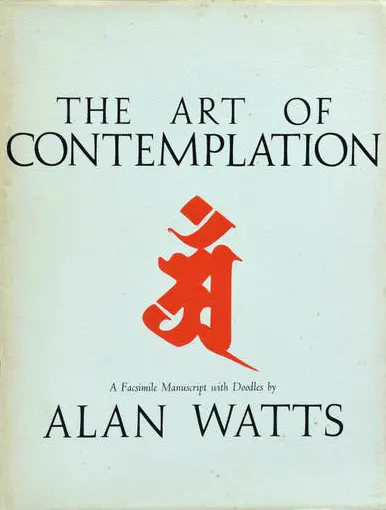
The Art of Contemplation
A manuscript with original doodles, handwritten by Alan Watts. It explores contemplation as awareness of the present moment without judgment. Watts advocates accepting what is happening now rather than trying to transform the mind. He sees contemplation as aligning with the flow of nature. Published as a limited edition by the Society of Comparative Philosophy.

The Future of Ecstasy
Watts envisions a future where society, after a global crisis, embraces ecstasy as a vital human need. Rejecting the “uptight” culture of the past, people now cultivate ecstasy as a skilled art. They learn to surrender to life’s vibrations, transforming ordinary consciousness and finding profound joy by navigating their experiences instead of resisting them.

The Gateless Gate
Watts explores Zen Buddhism's unconventional approach to conveying enlightenment through seemingly mundane statements or actions instead of words or teachings. He delves into various Zen stories and their commentaries, revealing how direct pointing at reality can lead to a profound realization beyond the limits of language and conceptual thinking.

The Natural Environment and Religion
Watts critiques our scholastic obsessions and urges an experiential approach to life, blending the spiritual and concrete like a Zen gardener planting mysteries among truths. He laments our sterile materialism and bureaucratic rigidity, championing a dance with risk, creativity, and nonverbal wisdom. With tales of mystics, scientists, and madmen, he celebrates the spice of oddballs, the necessity of nonsense, and the ineffable richness of being alive.
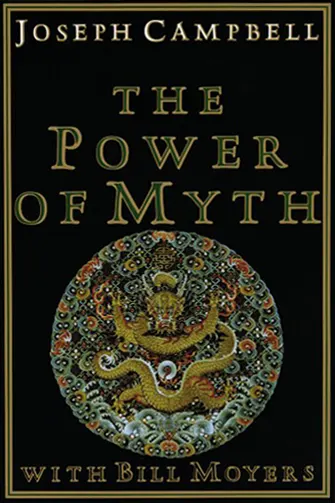
The Message of the Myth
The Power of Myth, Part 2
Bill Moyers and mythologist Joseph Campbell compare creation myths from the Bible and elsewhere, and talk about how religions and mythologies need to change with time in order to maintain their relevance in peoples’ lives.

The Problem with Christianity
Alan says Christianity is ultimately a solemn faith which sees the world's essence as inherently tragic. Within its core, he illuminates three tenets: the timeless gulf between creator and creature, the ceaseless battle of good versus evil, and the everlasting division amongst individuals.

The Psychedelic Experience
Alan says psychedelics like LSD and psilocybin can provide religious insight, but should be used with spiritual discipline to integrate the mystical experience into everyday life. He critiques psychiatry’s lack of metaphysical grounding and calls for medical and religious professionals to work together on psychedelics. Watts emphasizes psychedelics’ potential as a bridge between mystical and ordinary consciousness, while warning against spiritual inflation or romanticizing substances. Overall he presents a balanced perspective, exploring psychedelics as tools for self-knowledge that require wisdom in application.

The Smell of Burnt Almonds
Watts recounts a woman's experience of mystical insight under anesthesia and her yearning to regain it. He suggests not seeking the experience, but realizing one's ordinary state is still part of the universal harmony glimpsed then. Like the disciple who ignored the mahout's warning because all is Brahman, we should heed our present feelings too as part of the whole.

The Sound of Rain
A personal journey to Japan reveals that the heart of Zen is not a complex philosophy, but a direct experience of reality. Alan finds that, like the sound of rain, the universe needs no translation. True understanding arises from perceiving life as it is—a unified whole where everything from blooming flowers to our own consciousness is part of a single, magnificent happening.

The Supreme Identity
An Essay on Oriental Metaphysic and the Christian Religion
One of the most influential of Alan Watts’s early works, The Supreme Identity examines the reality of civilization’s deteriorated spiritual state and offers solutions through a rigorous theological discussion on Eastern metaphysic and the Christian religion. By examining the minute details of theological issues, Watts challenges readers to reassess the essences of religions that before seemed so familiar and to perceive Vedantic “oneness” as a meeting ground of all things—“good” and “evil.” In addressing how religious institutions fail to provide the wisdom or power necessary to cope with the modern condition, Watts confidently seeks the truth of the human existence and the divine continuum.

Limits of Language
The Tao of Philosophy 8
Alan Watts explains how language helps to construct reality, and what to do about it. He then follows up with the challenges of expressing the ineffable.

The Useless in Art
Philosophy: East and West, Program 16
Alan Watts rails against the pervasive mindset that art must be useful, whether for propaganda or profit. Art's supreme purpose lies not in serving any practical function, but in the sheer joyful act of creating. For Watts, true art is meaningless like nature itself—a tree simply exists to exist. We must let go of valuing only what promotes survival, he implores, so that we can rediscover the profound uselessness of play.
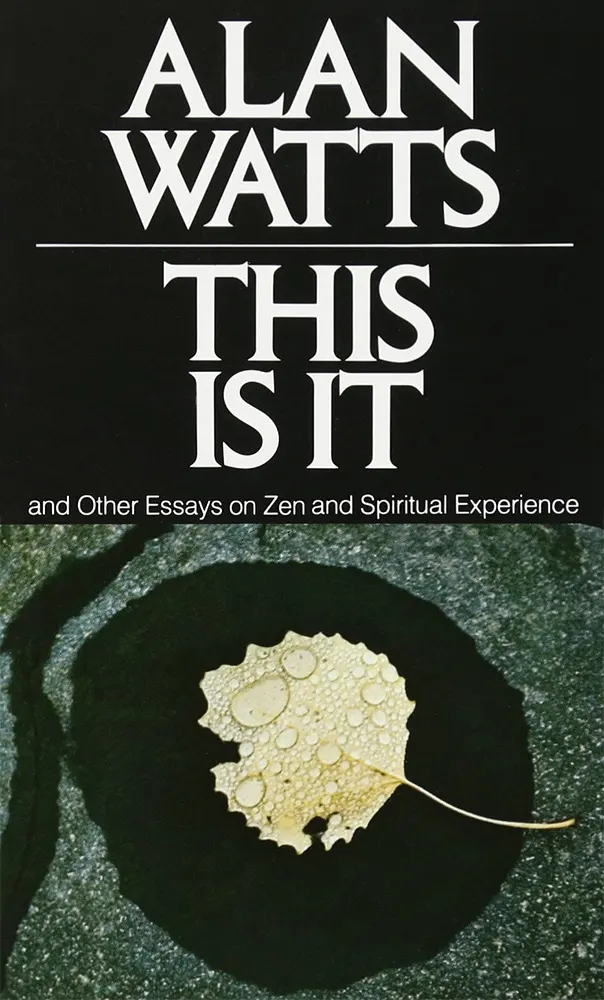
This Is It
and Other Essays on Zen and Spiritual Experience
Six revolutionary essays exploring the relationship between spiritual experience and ordinary life—and the need for them to coexist within each of us. With essays on “cosmic consciousness” (including Alan Watts’ account of his own ventures into this inward realm); the paradoxes of self-consciousness; LSD and consciousness; and the false opposition of spirit and matter, This Is It and Other Essays on Zen and Spiritual Experience is a truly mind-opening collection.

Thusness
Alan Watts discusses the concept of "thusness" or "suchness" in Eastern philosophy, exploring the meaning of the Sanskrit word tathātā and its potential to help us cultivate a deeper sense of presence and awareness in our daily lives.

Time and the Future
Immerse yourself in a mind-expanding seminar, where Watts illuminates the illusion of time and history, how our fixation on the future breeds anxiety, and how to break free and find fulfillment in the elusive present moment.

Transformation of Consciousness
Alan discusses the different states of consciousness which the human mind can attain, and some of the chemical compounds which may serve as tools to reach these mental realms.
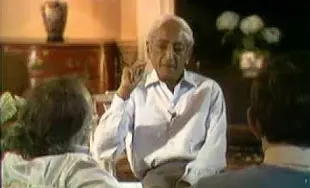
Are We Aware That We Are Fragmented?
Transformation of Man, Part 1
This trialogue between Krishnamurti, Bohm, and Shainberg methodically uncovers the nature of man’s psyche, his fragmentation, the limitations of a thought-based society, and finds out if there is a wholeness, a sacredness in life which is untouched by thought.

Turning the Head, or Turning On
Talking to an audience at San José State University, Alan Watts recounts the first time he tried consciousness-altering substances after meeting Aldous Huxley. He argues that Western society largely isn’t ready for the mystical experience which can be triggered in these mental states, but nonetheless advocates for them, as they may arouse positive transformation in the human collectivity.

Uncarved Block, Unbleached Silk
A delightful seminar in which Alan introduces his listeners to the details of Japanese and Chinese aesthetics.

Unity in Contemplation
Imagine peeling away the layers of your social self to reveal a cosmic peephole—that’s meditation, says Alan Watts, where you become the universe’s own eyeball, winking at itself. And here’s a divine chuckle: God’s not all furrowed brows and thunderbolts. Watts nudges us to float, not flail, through life’s spiritual circus. In a world gone madcap, he prescribes a dose of quiet contemplation—not as a grim duty, but as a playful plunge into life’s delicious absurdities.

Wash Yourself of Yourself
Ram Dass spins a winding tale—Sufi teachings, LSD paranoia, Buddhist insight—to drive home one unsettling truth: the end of the spiritual path is the end of you. Selflessness isn’t humility—it’s vanishing. When there’s no “you” left, only the Dharma acts, and the difference between life and death stops mattering.

Way Beyond Seeking
Alan reflects on key principles of Taoism, noting how even a fruit fly views itself as the pinnacle of creation—just as humans do. He explains how opposites like yin and yang rely on each other, like two sticks held in balance. Watts cautions against relying too heavily on words to capture life’s complexity. Yet, through stories and logic, he gently encourages us to embrace non-action, trust intuition, stay humble, and recognize our connection with nature. Taoist ideas to reflect on and savor.

What Is Now?
Rupert invites us to take a direct look at the present moment. His succinct investigation leads to stunning revelations about the nature of pure consciousness.

Why Not Now?
Alan guides us through an intimate meditation session that explores the nature of “now” and the self through direct experience rather than intellectual understanding. Using a variety of sounds, breathing exercises, and physical movements, we experience presence without analysis or labeling.

Wisdom of the Ridiculous
Alan Watts outlines the philosophy of Chinese thinker Zhuang Zhou, who believed in the value of useless things, relativity, and aligning with nature through “wu wei” or non-action. He used exaggeration and humor to argue against controlling life. Stories illustrate his ideas on uselessness and flowing with life's currents. Zhuang Zhou's approach contrasts with Western notions of God and law. Overall, his playful philosophy advocates not resisting the natural Tao or way of things.

World as Consciousness
Alan Watts guides us through Mahayana Buddhism to reveal that the world is not something we passively witness, but something we actively create—moment by moment. Wake up: reality is now, consciousness is all, and you are the dance itself.

World as Play
Watts presents a core Eastern philosophy of the world as a dramatic illusion, and that it exists for no other reason except to be experienced in a playful manner.

Zen Bones
Alan invites us to float like clouds and experience life directly instead of mediating it through concepts. Constant thinking takes us from the real. Open wide the mind’s doors, be here, flow present like water. Watts touches on meditation’s liberating power in realizing our true nature already within. Sit, walk, breathe; see through illusion’s mist, marvel at the mundane’s hidden jewels, embrace each now, wake up! Enlightenment’s sunrise awaits those who cease thinking. Realize you're already It and let life’s living magic move your feet.
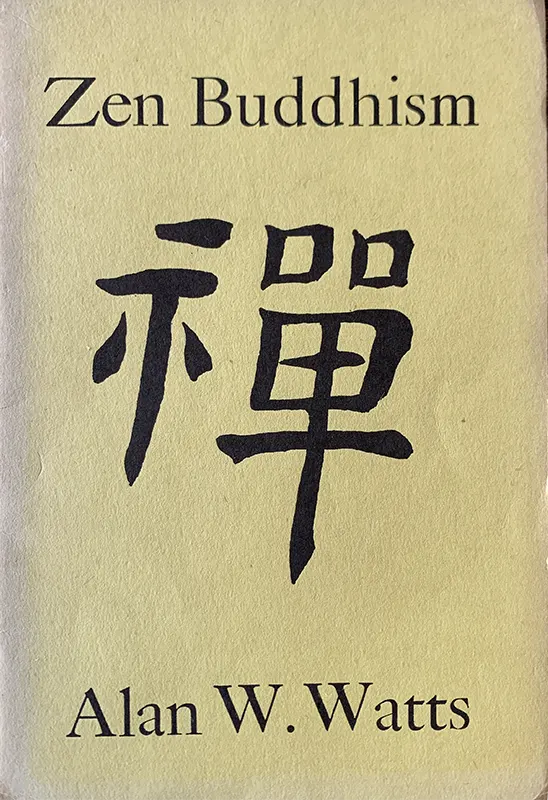
Zen Buddhism
This insightful booklet illuminates Zen Buddhism's iconoclastic yet practical approach to awakening one's mind to the timeless Reality beyond concepts. Watts skillfully conveys how Zen uses spontaneity, humor, and shock tactics to point directly to the ever-present "now." A thoughtful exploration for any seeker.
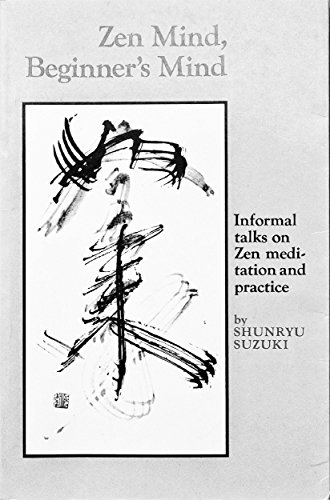
Zen Mind, Beginner's Mind
Since its original publication, Zen Mind, Beginner's Mind has become one of the great modern Zen classics, much beloved, much re-read, and much recommended as the best first book to read on Zen. Suzuki Roshi presents the basics—from the details of posture and breathing in zazen to the perception of nonduality—in a way that is not only remarkably clear, but that also resonates with the joy of insight from the first to the last page. It's a book to come back to time and time again as an inspiration to practice.

Zen Reconsidered
Is your mind playing tricks? Alan Watts reveals Zen isn’t about adding beliefs, but shedding the illusion of a separate self. Discover you’re already part of one vast, joyful cosmic dance—experience it directly for profound freedom!

Zen and the Art of Motorcycle Maintenance
An Inquiry into Values
A father and son embark on a motorcycle road trip across the U.S., blending personal reflection with a deep philosophical exploration of life. The narrative examines the concept of “Quality,” a unifying idea that bridges art, science, and human values. Through vivid travel experiences and flashbacks to the narrator’s past, it questions the balance between rational thinking and intuition, the meaning of technology, and how people find purpose in their work and lives. It’s a journey of self-discovery and timeless insight.

Zen and the Art of the Controlled Accident
Most people grow up learning to treat life as a problem, a set of circumstances which must be controlled with an iron will. Some transcend this view, realizing there is no problem and nothing to attain. In that state of mind it becomes possible to act without intention, to have “controlled accidents,” and in so doing one may rejoin society as a whimsical rascal who breaks things to improve them.

Zenrin Poems
Alan Watts explores Zenrin poems: ancient verses used in Zen practice. He unveils their wisdom, revealing how everyday observations point to profound truths about our nature and the interconnectedness of all things, urging us to find the extraordinary within the ordinary.